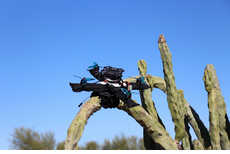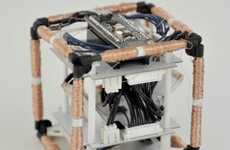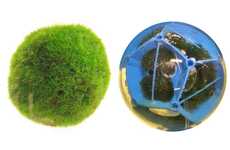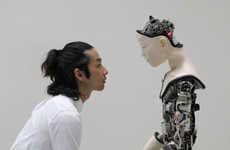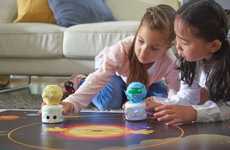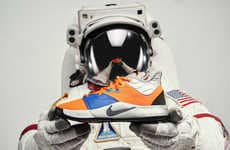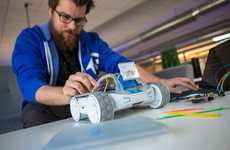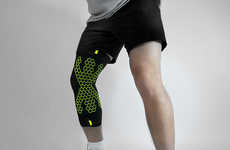
NASA is Creating Soft Robots That Can Navigate Mars' Terrain
Grace Mahas — May 15, 2019 — Tech
References: nasa.gov & livescience
Inflatable soft robots are being developed by NASA interns Chuck Sullivan and Jack Fitzpatrick to explore Mars. These soft robots are made from a supple rubber that's partially built by a 3D printing mold. The soft body allows the robots to move and bend without damaging their internal mechanics.
The flexible body also makes the soft robots better equipped to maneuver difficult terrain, increase their range of motion, and reducing their size to fit their surroundings. Thanks to the inflatable design, NASA explains that "the robot can flex and relax, just like a human muscle." These features make the robot resilient to damage, unlike traditional rigid robots. These adaptable robots could change how we explore space and how we build the robots of the future.
Image Credit: Gary Banzinger/NASA
The flexible body also makes the soft robots better equipped to maneuver difficult terrain, increase their range of motion, and reducing their size to fit their surroundings. Thanks to the inflatable design, NASA explains that "the robot can flex and relax, just like a human muscle." These features make the robot resilient to damage, unlike traditional rigid robots. These adaptable robots could change how we explore space and how we build the robots of the future.
Image Credit: Gary Banzinger/NASA
Trend Themes
1. Inflatable Robots - The development of inflatable robots presents opportunities for increased flexibility and adaptability in various industries.
2. Soft Robotics - The advancement of soft robotics technology opens up possibilities for safer and more efficient exploration and manipulation tasks.
3. 3D Printing in Robotics - The integration of 3D printing in the production of robots offers opportunities for customized designs and rapid prototyping.
Industry Implications
1. Space Exploration - Inflatable and soft robots could revolutionize how we explore space and conduct missions in extraterrestrial environments.
2. Manufacturing - Incorporating inflatable and soft robotics in manufacturing processes can lead to improved efficiency, worker safety, and product quality.
3. Healthcare - The use of inflatable and soft robots in healthcare applications can enhance surgical procedures, rehabilitation, and assistive technologies.
1.2
Score
Popularity
Activity
Freshness

